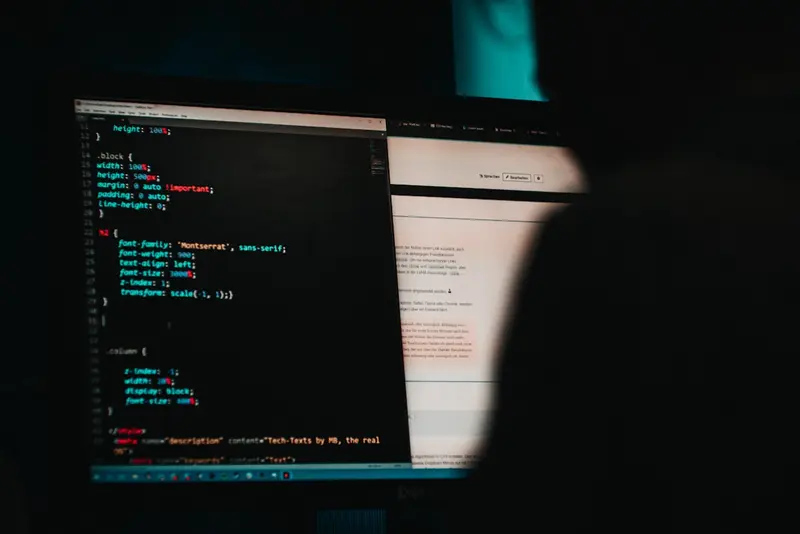In the evolving landscape of container technology, security has become paramount. Podman, with its daemonless, rootless architecture, represents a paradigm shift in container security. This comprehensive guide demonstrates how to implement enterprise-grade container security using Podman on Rocky Linux 9, covering everything from rootless containers to advanced SELinux policies and secure supply chain management.
🌟 Why Podman for Container Security?
Podman’s architecture fundamentally differs from traditional container runtimes, offering inherent security advantages that make it ideal for security-conscious enterprises and compliance-driven environments.
Security-First Architecture
- Daemonless Design - No persistent daemon means reduced attack surface 🛡️
- Rootless Containers - Run containers without root privileges by default 👤
- SELinux Integration - Native support for mandatory access controls 🔒
- User Namespaces - Strong isolation between containers and host 🏰
- Systemd Integration - Leverage systemd’s security features 🔧
📋 Prerequisites and Security Baseline
System Requirements
# Rocky Linux 9 minimal installation
- CPU: 2+ cores (4 recommended)
- RAM: 4 GB minimum (8 GB recommended)
- Storage: 20 GB for system + container storage
- Network: Properly configured firewall
- SELinux: Enforcing modeInitial Security Hardening
# Update system
sudo dnf update -y
# Install security tools
sudo dnf install -y \
aide \
audit \
rkhunter \
fail2ban \
firewalld \
policycoreutils-python-utils \
setroubleshoot-server
# Enable and configure firewall
sudo systemctl enable --now firewalld
sudo firewall-cmd --set-default-zone=drop
sudo firewall-cmd --permanent --add-service=ssh
sudo firewall-cmd --reload
# Configure audit daemon
sudo systemctl enable --now auditd
sudo auditctl -e 1 # Enable auditingSELinux Configuration
# Ensure SELinux is enforcing
sudo setenforce 1
sudo sed -i 's/SELINUX=.*/SELINUX=enforcing/' /etc/selinux/config
# Install SELinux utilities
sudo dnf install -y \
selinux-policy-devel \
setools-console \
policycoreutils-devel
# Check SELinux status
sestatus🔧 Installing and Securing Podman
Installation
# Install Podman and security tools
sudo dnf install -y \
podman \
podman-plugins \
podman-compose \
buildah \
skopeo \
crun \
fuse-overlayfs \
container-selinux
# Verify installation
podman version
podman info --debugConfigure Secure Defaults
# Configure containers.conf for security
sudo tee /etc/containers/containers.conf << 'EOF'
[containers]
# Use crun for better security features
runtime = "crun"
# Default capabilities (minimal set)
default_capabilities = [
"CHOWN",
"DAC_OVERRIDE",
"FOWNER",
"FSETID",
"KILL",
"NET_BIND_SERVICE",
"SETFCAP",
"SETGID",
"SETPCAP",
"SETUID"
]
# Security options
no_new_privileges = true
seccomp_profile = "/usr/share/containers/seccomp.json"
# Default ulimits
default_ulimits = [
"nofile=1024:1024",
"nproc=1024:1024"
]
[engine]
# Runtime security
runtime_supports_nocgroups = ["crun"]
runtime_supports_json = ["crun", "runc"]
# Image security
pull_policy = "always"
EOF
# Configure registries
sudo tee /etc/containers/registries.conf << 'EOF'
unqualified-search-registries = ["registry.access.redhat.com", "registry.fedoraproject.org", "docker.io"]
[[registry]]
location = "docker.io"
blocked = false
[[registry.mirror]]
location = "mirror.gcr.io"
# Block insecure registries
[registries.insecure]
registries = []
EOF🏃 Rootless Container Implementation
Setting Up Rootless Podman
# Enable lingering for user (allows user services to run without login)
sudo loginctl enable-linger $USER
# Configure subuid and subgid
sudo usermod --add-subuids 100000-165535 $USER
sudo usermod --add-subgids 100000-165535 $USER
# Verify mappings
grep $USER /etc/subuid /etc/subgid
# Configure user namespaces
echo "user.max_user_namespaces=28633" | sudo tee -a /etc/sysctl.conf
sudo sysctl -p
# Set up XDG runtime directory
export XDG_RUNTIME_DIR=/run/user/$(id -u)Rootless Storage Configuration
# Configure storage for rootless containers
mkdir -p ~/.config/containers
tee ~/.config/containers/storage.conf << 'EOF'
[storage]
driver = "overlay"
runroot = "/run/user/1000/containers"
graphroot = "/home/user/.local/share/containers/storage"
[storage.options]
# Enable additional security options
mount_program = "/usr/bin/fuse-overlayfs"
mountopt = "nodev,metacopy=on"
[storage.options.overlay]
# Security mount options
mountopt = "nodev,metacopy=on"
# Size limits
size = "10G"
EOF
# Initialize rootless storage
podman system migrate
podman infoRootless Networking
# Configure rootless networking
tee ~/.config/containers/containers.conf << 'EOF'
[network]
# Use slirp4netns for rootless networking
network_backend = "slirp4netns"
[engine]
# Rootless network configuration
network_cmd_options = [
"enable_ipv6=false",
"mtu=1500"
]
EOF
# Test rootless networking
podman run --rm alpine ping -c 3 8.8.8.8🔒 SELinux Container Policies
Understanding Container SELinux Contexts
# View container SELinux contexts
ps -eZ | grep container
# Check available container types
seinfo -t | grep container
# Common container contexts:
# container_t - Standard container process
# container_file_t - Container files
# container_var_lib_t - Container persistent storage
# container_runtime_t - Container runtime processesCustom SELinux Policies
# Create custom policy for application containers
cat > webapp_container.te << 'EOF'
policy_module(webapp_container, 1.0.0)
require {
type container_t;
type container_file_t;
type httpd_port_t;
type postgresql_port_t;
class tcp_socket { name_connect };
class file { read write };
}
# Allow web containers to connect to database
allow container_t postgresql_port_t:tcp_socket name_connect;
# Allow containers to read/write specific files
allow container_t container_file_t:file { read write };
EOF
# Compile and install policy
make -f /usr/share/selinux/devel/Makefile webapp_container.pp
sudo semodule -i webapp_container.pp
# Verify policy is loaded
sudo semodule -l | grep webapp_containerSELinux Container Labeling
# Run container with specific SELinux context
podman run -d \
--name webapp \
--security-opt label=type:container_webapp_t \
--security-opt label=level:s0:c100,c200 \
nginx:alpine
# Change file context for volumes
sudo semanage fcontext -a -t container_file_t "/data/webapp(/.*)?"
sudo restorecon -Rv /data/webapp
# Verify contexts
ls -laZ /data/webapp
podman inspect webapp | grep -A5 "SecurityOpt"🛡️ Container Image Security
Secure Image Building with Buildah
# Create secure Containerfile
cat > Containerfile.secure << 'EOF'
# Use minimal base image
FROM registry.access.redhat.com/ubi9-minimal:latest
# Security labels
LABEL maintainer="[email protected]"
LABEL version="1.0"
LABEL security.scan="required"
# Create non-root user
RUN microdnf install -y shadow-utils && \
microdnf clean all && \
useradd -r -u 1001 -g 0 -s /sbin/nologin appuser
# Install only necessary packages
RUN microdnf install -y \
python3 \
python3-pip && \
microdnf clean all && \
rm -rf /var/cache/yum
# Copy application
COPY --chown=1001:0 app/ /app/
# Set secure permissions
RUN chmod -R g=u /app && \
chmod -R o-rwx /app
# Security configurations
USER 1001
WORKDIR /app
# Read-only root filesystem
VOLUME ["/tmp", "/var/tmp"]
# Health check
HEALTHCHECK --interval=30s --timeout=3s --start-period=5s --retries=3 \
CMD python3 /app/healthcheck.py || exit 1
# Run as non-root
ENTRYPOINT ["python3"]
CMD ["/app/main.py"]
EOF
# Build with security scanning
buildah bud \
--format docker \
--layers \
--label security.scan.date="$(date -u +'%Y-%m-%dT%H:%M:%SZ')" \
-t secure-app:latest \
-f Containerfile.secure .Image Vulnerability Scanning
# Install Trivy scanner
sudo dnf install -y epel-release
sudo dnf install -y trivy
# Scan image for vulnerabilities
trivy image --severity HIGH,CRITICAL secure-app:latest
# Scan with detailed output
trivy image \
--format json \
--output scan-results.json \
--severity HIGH,CRITICAL \
--vuln-type os,library \
secure-app:latest
# Create scanning script
cat > /usr/local/bin/scan-image.sh << 'EOF'
#!/bin/bash
IMAGE=$1
SEVERITY=${2:-HIGH,CRITICAL}
echo "Scanning image: $IMAGE"
trivy image --severity $SEVERITY $IMAGE
if [ $? -ne 0 ]; then
echo "Security vulnerabilities found!"
exit 1
fi
echo "Image passed security scan"
EOF
chmod +x /usr/local/bin/scan-image.shImage Signing with Sigstore
# Install cosign
curl -L https://github.com/sigstore/cosign/releases/latest/download/cosign-linux-amd64 -o cosign
chmod +x cosign
sudo mv cosign /usr/local/bin/
# Generate key pair
cosign generate-key-pair
# Sign container image
cosign sign --key cosign.key localhost/secure-app:latest
# Verify image signature
cosign verify --key cosign.pub localhost/secure-app:latest
# Configure Podman to require signatures
cat >> /etc/containers/policy.json << 'EOF'
{
"default": [{"type": "insecureAcceptAnything"}],
"transports": {
"docker": {
"localhost": [
{
"type": "signedBy",
"keyType": "GPGKeys",
"keyPath": "/etc/pki/containers/cosign.pub"
}
]
}
}
}
EOF🔐 Runtime Security Controls
Seccomp Profiles
# Create custom seccomp profile
cat > webapp-seccomp.json << 'EOF'
{
"defaultAction": "SCMP_ACT_ERRNO",
"defaultErrnoRet": 1,
"archMap": [
{
"architecture": "SCMP_ARCH_X86_64",
"subArchitectures": [
"SCMP_ARCH_X86",
"SCMP_ARCH_X32"
]
}
],
"syscalls": [
{
"names": [
"accept", "accept4", "access", "bind", "brk",
"clock_gettime", "clone", "close", "connect",
"dup", "dup2", "epoll_create", "epoll_ctl",
"epoll_wait", "execve", "exit", "exit_group",
"fcntl", "fstat", "futex", "getdents64",
"getpid", "getppid", "getsockname", "getsockopt",
"listen", "lseek", "mmap", "mprotect", "munmap",
"open", "openat", "pipe", "poll", "pread64",
"pwrite64", "read", "readlink", "recvfrom",
"recvmsg", "rename", "rt_sigaction", "rt_sigprocmask",
"sendmsg", "sendto", "set_tid_address", "setsockopt",
"shutdown", "sigaltstack", "socket", "stat",
"uname", "unlink", "wait4", "write"
],
"action": "SCMP_ACT_ALLOW"
}
]
}
EOF
# Run container with custom seccomp profile
podman run -d \
--name secure-webapp \
--security-opt seccomp=webapp-seccomp.json \
--read-only \
--tmpfs /tmp \
--tmpfs /var/tmp \
secure-app:latestAppArmor Integration (if enabled)
# Install AppArmor utilities
sudo dnf install -y apparmor-utils
# Create AppArmor profile for containers
sudo tee /etc/apparmor.d/podman-container << 'EOF'
#include <tunables/global>
profile podman-container flags=(attach_disconnected,mediate_deleted) {
#include <abstractions/base>
# Deny network access
deny network raw,
# File access
/usr/bin/podman ix,
/usr/lib/** r,
/proc/sys/kernel/random/uuid r,
/dev/null rw,
/dev/zero rw,
/dev/urandom r,
# Temp directories
/tmp/** rw,
/var/tmp/** rw,
# Deny sensitive paths
deny /etc/shadow r,
deny /etc/passwd w,
deny /root/** rwx,
deny /home/** rwx,
}
EOF
# Load profile
sudo apparmor_parser -r /etc/apparmor.d/podman-container
# Run with AppArmor
podman run -d \
--name apparmor-test \
--security-opt apparmor=podman-container \
nginx:alpineResource Limits and Cgroups
# Run container with resource limits
podman run -d \
--name limited-app \
--memory="512m" \
--memory-swap="512m" \
--cpus="0.5" \
--pids-limit=100 \
--ulimit nofile=1024:1024 \
--ulimit nproc=512:512 \
--read-only \
--security-opt=no-new-privileges \
secure-app:latest
# Create systemd unit with resource limits
podman generate systemd \
--new \
--name limited-app \
--restart-policy=on-failure \
--restart-sec=30 > ~/.config/systemd/user/limited-app.service
# Add additional security to systemd unit
cat >> ~/.config/systemd/user/limited-app.service << 'EOF'
# Additional security settings
PrivateTmp=yes
ProtectSystem=strict
ProtectHome=yes
NoNewPrivileges=yes
ReadOnlyPaths=/
ReadWritePaths=/tmp /var/tmp
ProtectKernelTunables=yes
ProtectKernelModules=yes
ProtectControlGroups=yes
RestrictRealtime=yes
RestrictSUIDSGID=yes
MemoryDenyWriteExecute=yes
LockPersonality=yes
EOF
# Enable and start service
systemctl --user daemon-reload
systemctl --user enable --now limited-app.service🌐 Network Security
Container Network Isolation
# Create isolated network
podman network create \
--driver bridge \
--subnet 10.88.0.0/24 \
--gateway 10.88.0.1 \
--opt isolate=true \
secure-net
# Create network with custom firewall rules
cat > /etc/containers/networks/secure-net.conflist << 'EOF'
{
"cniVersion": "0.4.0",
"name": "secure-net",
"plugins": [
{
"type": "bridge",
"bridge": "cni-secure",
"isGateway": true,
"ipMasq": true,
"hairpinMode": true,
"ipam": {
"type": "host-local",
"routes": [{"dst": "0.0.0.0/0"}],
"ranges": [[{"subnet": "10.88.0.0/24", "gateway": "10.88.0.1"}]]
}
},
{
"type": "firewall",
"backend": "iptables",
"forward": false,
"masquerade": true
},
{
"type": "tuning",
"sysctl": {
"net.ipv4.conf.all.forwarding": "0",
"net.ipv4.conf.all.send_redirects": "0",
"net.ipv4.conf.all.accept_redirects": "0"
}
}
]
}
EOF
# Run containers in isolated network
podman run -d \
--name webapp \
--network secure-net \
--ip 10.88.0.10 \
nginx:alpine
podman run -d \
--name database \
--network secure-net \
--ip 10.88.0.20 \
postgres:alpineNetwork Policies with Firewall
# Configure firewall rules for containers
sudo firewall-cmd --new-zone=containers --permanent
sudo firewall-cmd --zone=containers --add-source=10.88.0.0/24 --permanent
sudo firewall-cmd --zone=containers --add-service=http --permanent
sudo firewall-cmd --zone=containers --add-service=https --permanent
sudo firewall-cmd --reload
# Create iptables rules for inter-container communication
sudo iptables -N CONTAINER-SECURITY
sudo iptables -A CONTAINER-SECURITY -s 10.88.0.10 -d 10.88.0.20 -p tcp --dport 5432 -j ACCEPT
sudo iptables -A CONTAINER-SECURITY -j DROP
# Apply rules to container traffic
sudo iptables -I FORWARD -s 10.88.0.0/24 -j CONTAINER-SECURITY📁 Secure Volume Management
Encrypted Volumes
# Create encrypted volume
sudo dnf install -y cryptsetup
# Create encrypted container storage
sudo dd if=/dev/zero of=/var/lib/containers-encrypted.img bs=1G count=10
sudo cryptsetup luksFormat /var/lib/containers-encrypted.img
sudo cryptsetup open /var/lib/containers-encrypted.img containers-secure
# Format and mount
sudo mkfs.xfs /dev/mapper/containers-secure
sudo mkdir -p /var/lib/containers-secure
sudo mount /dev/mapper/containers-secure /var/lib/containers-secure
# Configure Podman to use encrypted storage
cat >> ~/.config/containers/storage.conf << 'EOF'
[storage]
driver = "overlay"
runroot = "/run/user/1000/containers"
graphroot = "/var/lib/containers-secure/storage"
EOFVolume Security Labels
# Create volume with SELinux labels
podman volume create \
--label security=high \
--opt o=context=system_u:object_r:container_file_t:s0:c100,c200 \
secure-data
# Mount with security options
podman run -d \
--name secure-db \
-v secure-data:/var/lib/postgresql/data:Z \
--security-opt label=level:s0:c100,c200 \
postgres:alpine
# Verify SELinux contexts
podman volume inspect secure-data
ls -laZ $(podman volume inspect secure-data --format '{{.Mountpoint}}')🔍 Security Monitoring and Auditing
Container Activity Auditing
# Configure audit rules for container activities
sudo tee /etc/audit/rules.d/containers.rules << 'EOF'
# Monitor container runtime
-w /usr/bin/podman -p x -k container_runtime
-w /usr/bin/runc -p x -k container_runtime
-w /usr/bin/crun -p x -k container_runtime
# Monitor container storage
-w /var/lib/containers/ -p wa -k container_storage
-w /etc/containers/ -p wa -k container_config
# Monitor container processes
-a always,exit -F arch=b64 -S clone -F a0&0x7C020000 -k container_create
-a always,exit -F arch=b64 -S unshare -k container_unshare
# Monitor capability changes
-a always,exit -F arch=b64 -S capset -k container_capabilities
EOF
# Reload audit rules
sudo augenrules --load
sudo systemctl restart auditd
# Search audit logs for container events
sudo ausearch -k container_runtime -ts recentRuntime Security Monitoring
# Create monitoring script
cat > /usr/local/bin/container-monitor.sh << 'EOF'
#!/bin/bash
# Monitor running containers
while true; do
echo "=== Container Security Status $(date) ==="
# Check for privileged containers
echo "Checking for privileged containers..."
podman ps --format "table {{.Names}}\t{{.SecurityOpt}}" | grep -i privileged
# Check for containers running as root
echo "Checking for root containers..."
for container in $(podman ps -q); do
user=$(podman exec $container id -u 2>/dev/null)
if [ "$user" = "0" ]; then
echo "WARNING: Container $(podman ps --filter id=$container --format {{.Names}}) running as root"
fi
done
# Check for excessive capabilities
echo "Checking container capabilities..."
for container in $(podman ps -q); do
caps=$(podman inspect $container --format '{{.EffectiveCaps}}')
echo "Container $(podman ps --filter id=$container --format {{.Names}}): $caps"
done
sleep 300
done
EOF
chmod +x /usr/local/bin/container-monitor.sh
# Create systemd service for monitoring
sudo tee /etc/systemd/system/container-monitor.service << 'EOF'
[Unit]
Description=Container Security Monitor
After=podman.service
[Service]
Type=simple
ExecStart=/usr/local/bin/container-monitor.sh
Restart=always
StandardOutput=journal
StandardError=journal
[Install]
WantedBy=multi-user.target
EOF
sudo systemctl enable --now container-monitor.serviceSecurity Event Logging
# Configure container logging
cat >> ~/.config/containers/containers.conf << 'EOF'
[containers]
# Enable detailed logging
log_driver = "journald"
log_tag = "container/{{.Name}}/{{.ID}}"
[engine]
# Event logging
events_logger = "journald"
events_log_file_path = ""
EOF
# Create log analysis script
cat > /usr/local/bin/analyze-container-logs.sh << 'EOF'
#!/bin/bash
echo "=== Container Security Log Analysis ==="
# Check for authentication failures
echo "Authentication failures:"
journalctl -u podman --since "1 hour ago" | grep -i "auth\|fail\|denied"
# Check for SELinux denials
echo -e "\nSELinux denials:"
sudo ausearch -m AVC -ts recent | grep container
# Check for capability requests
echo -e "\nCapability requests:"
journalctl -u podman --since "1 hour ago" | grep -i "cap_\|capability"
# Check for network anomalies
echo -e "\nNetwork anomalies:"
journalctl -u podman --since "1 hour ago" | grep -i "connection refused\|timeout"
EOF
chmod +x /usr/local/bin/analyze-container-logs.sh🚀 Secure Container Deployment
Production Deployment Example
# Create production-ready container deployment
cat > deploy-secure-app.sh << 'EOF'
#!/bin/bash
set -euo pipefail
APP_NAME="secure-webapp"
IMAGE="localhost/secure-app:latest"
NETWORK="secure-net"
# Pre-deployment checks
echo "Running pre-deployment security checks..."
# Scan image
trivy image --severity HIGH,CRITICAL --exit-code 1 $IMAGE || {
echo "Image failed security scan"
exit 1
}
# Verify image signature
cosign verify --key /etc/pki/containers/cosign.pub $IMAGE || {
echo "Image signature verification failed"
exit 1
}
# Create secure container
podman run -d \
--name $APP_NAME \
--network $NETWORK \
--health-cmd='/app/healthcheck.sh' \
--health-interval=30s \
--health-retries=3 \
--health-start-period=60s \
--restart=on-failure:3 \
--memory="1g" \
--memory-swap="1g" \
--cpus="1.0" \
--pids-limit=200 \
--read-only \
--tmpfs /tmp:rw,noexec,nodev,nosuid,size=100m \
--tmpfs /var/tmp:rw,noexec,nodev,nosuid,size=100m \
--security-opt=no-new-privileges \
--security-opt label=type:container_webapp_t \
--security-opt seccomp=/etc/containers/seccomp/webapp.json \
--cap-drop=ALL \
--cap-add=NET_BIND_SERVICE \
--publish 8080:8080 \
--env-file /etc/containers/webapp.env \
--secret webapp-tls-cert,target=/etc/ssl/certs/webapp.crt \
--secret webapp-tls-key,target=/etc/ssl/private/webapp.key \
--log-driver=journald \
--log-opt tag="{{.Name}}/{{.ID}}" \
$IMAGE
echo "Container deployed successfully"
echo "Running post-deployment verification..."
# Verify container is running with correct security context
podman inspect $APP_NAME --format '{{.State.Status}}' | grep -q running
podman inspect $APP_NAME --format '{{.EffectiveCaps}}' | grep -q '^\[NET_BIND_SERVICE\]$'
echo "Deployment complete and verified"
EOF
chmod +x deploy-secure-app.shContainer Secrets Management
# Create secret for sensitive data
echo -n "SuperSecretPassword123!" | podman secret create db-password -
# Create TLS certificates secret
podman secret create webapp-tls-cert /path/to/cert.pem
podman secret create webapp-tls-key /path/to/key.pem
# Use secrets in container
podman run -d \
--name secure-db \
--secret db-password \
--env POSTGRES_PASSWORD_FILE=/run/secrets/db-password \
postgres:alpine
# List and manage secrets
podman secret ls
podman secret inspect db-password🔧 Troubleshooting Security Issues
Common Security Issues
# SELinux troubleshooting
# Check for denials
sudo ausearch -m AVC -ts recent
# Generate policy for denials
sudo ausearch -m AVC -ts recent | audit2allow -M mycontainer
sudo semodule -i mycontainer.pp
# Temporarily disable for testing (NOT for production)
sudo semanage permissive -a container_t
# Debug rootless issues
podman unshare cat /proc/self/uid_map
podman info --debug | grep -i rootless
# Check user namespaces
cat /proc/sys/user/max_user_namespacesSecurity Scanning Automation
# Create CI/CD security scanning
cat > .gitlab-ci.yml << 'EOF'
stages:
- build
- security
- deploy
variables:
IMAGE_NAME: $CI_REGISTRY_IMAGE:$CI_COMMIT_SHA
build:
stage: build
script:
- buildah bud -t $IMAGE_NAME .
- buildah push $IMAGE_NAME
security-scan:
stage: security
script:
- trivy image --exit-code 1 --severity HIGH,CRITICAL $IMAGE_NAME
- |
if [ $? -ne 0 ]; then
echo "Security vulnerabilities found!"
exit 1
fi
sign-image:
stage: security
script:
- cosign sign --key $COSIGN_KEY $IMAGE_NAME
only:
- main
deploy:
stage: deploy
script:
- ./deploy-secure-app.sh
only:
- main
EOF🎯 Security Best Practices
Container Security Checklist
-
Image Security
- ✅ Use minimal base images (UBI, Alpine)
- ✅ Scan images for vulnerabilities
- ✅ Sign and verify images
- ✅ Regular image updates
- ✅ Multi-stage builds
-
Runtime Security
- ✅ Run rootless containers
- ✅ Drop all capabilities, add only required
- ✅ Use read-only root filesystem
- ✅ Implement resource limits
- ✅ Enable SELinux/AppArmor
-
Network Security
- ✅ Isolate container networks
- ✅ Implement firewall rules
- ✅ Use TLS for all communications
- ✅ Disable unnecessary protocols
- ✅ Regular security audits
-
Data Security
- ✅ Encrypt sensitive data at rest
- ✅ Use secrets management
- ✅ Implement proper access controls
- ✅ Regular backups
- ✅ Audit data access
-
Monitoring
- ✅ Enable comprehensive logging
- ✅ Monitor security events
- ✅ Set up alerting
- ✅ Regular security reviews
- ✅ Incident response plan
Compliance Considerations
# CIS Benchmark compliance check
cat > cis-docker-benchmark.sh << 'EOF'
#!/bin/bash
echo "CIS Podman/Container Benchmark Check"
# 5.1 Ensure that, if applicable, an AppArmor Profile is enabled
echo -n "5.1 AppArmor Profile: "
podman inspect webapp --format '{{ .AppArmorProfile }}' || echo "Not configured"
# 5.2 Ensure that, if applicable, SELinux security options are set
echo -n "5.2 SELinux Options: "
podman inspect webapp --format '{{ .HostConfig.SecurityOpt }}' | grep -q label && echo "PASS" || echo "FAIL"
# 5.3 Ensure that Linux kernel capabilities are restricted
echo -n "5.3 Capabilities Restricted: "
caps=$(podman inspect webapp --format '{{ .EffectiveCaps }}')
[ "$caps" = "[]" ] && echo "PASS" || echo "FAIL - Has capabilities: $caps"
# 5.4 Ensure that privileged containers are not used
echo -n "5.4 No Privileged Containers: "
podman ps --format '{{ .Names }} {{ .Privileged }}' | grep -q true && echo "FAIL" || echo "PASS"
# 5.5 Ensure sensitive host system directories are not mounted
echo -n "5.5 No Sensitive Mounts: "
podman inspect webapp --format '{{ .Mounts }}' | grep -E '(/etc|/root|/var/run/docker.sock)' && echo "FAIL" || echo "PASS"
EOF
chmod +x cis-docker-benchmark.sh📚 Advanced Security Topics
Supply Chain Security
# Implement SLSA compliance
cat > slsa-provenance.json << 'EOF'
{
"_type": "https://in-toto.io/Statement/v0.1",
"predicateType": "https://slsa.dev/provenance/v0.1",
"subject": [{
"name": "localhost/secure-app",
"digest": {
"sha256": "..."
}
}],
"predicate": {
"builder": {
"id": "https://github.com/example/builder@v1"
},
"buildType": "https://example.com/container/v1",
"invocation": {
"configSource": {
"uri": "git+https://github.com/example/app@refs/heads/main",
"digest": {
"sha1": "..."
}
}
}
}
}
EOF
# Sign provenance
cosign attest --key cosign.key --predicate slsa-provenance.json localhost/secure-app:latestZero Trust Container Architecture
# Implement zero trust principles
# 1. Never trust, always verify
# 2. Least privilege access
# 3. Assume breach
# Service mesh integration for zero trust
podman network create zero-trust-mesh
# Run with service mesh sidecar
podman pod create --name webapp-pod --network zero-trust-mesh
podman run -d \
--pod webapp-pod \
--name envoy-proxy \
envoyproxy/envoy:latest
podman run -d \
--pod webapp-pod \
--name webapp \
localhost/secure-app:latest🌐 Resources and Next Steps
Learning Path
- Container Security Fundamentals - Understanding attack vectors
- SELinux Deep Dive - Advanced policy creation
- Supply Chain Security - SBOM and attestation
- Runtime Protection - Falco and runtime security
- Compliance Automation - Policy as Code
Useful Resources
- Podman Security Documentation
- SELinux Container Policies
- CIS Benchmark for Containers
- NIST Container Security Guide
- Open Container Initiative Security
Implementing container security with Podman on Rocky Linux 9 provides a robust foundation for running containers in production environments. By leveraging rootless containers, SELinux integration, and comprehensive security controls, you can build a defense-in-depth strategy that protects your containerized applications. Remember that security is an ongoing process – continuously monitor, audit, and improve your container security posture. Stay secure! 🔐




